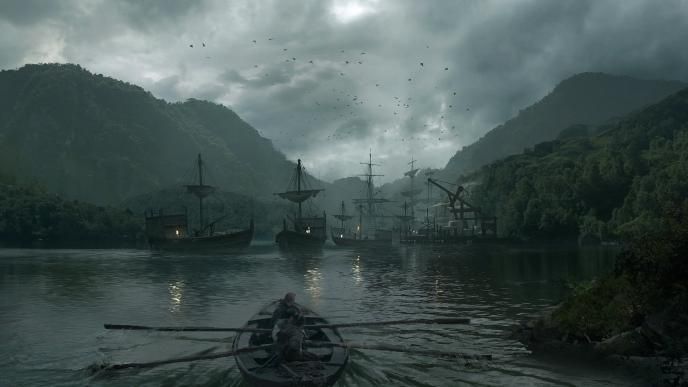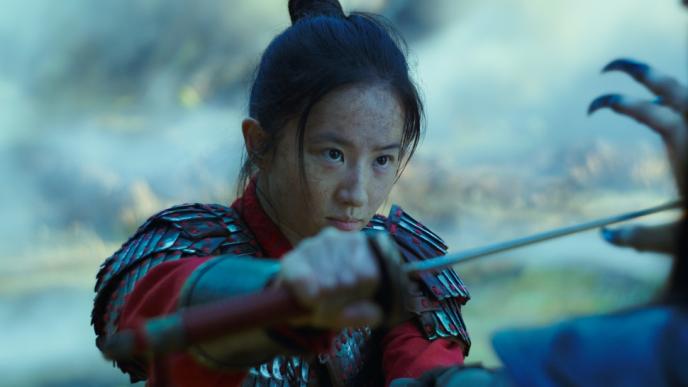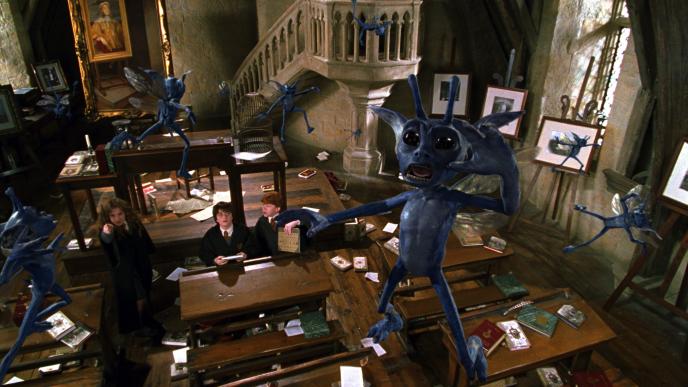
King Arthur: Legend of the Sword
Framestore was pleased to join the voyage to Medieval England for King Arthur: Legend of the Sword, reuniting the studio with British director Guy Ritchie and his team. Conjuring giant elephants, magical serpents and the out-of-this-world CG environments, Framestore’s Art Department worked on detailed concepts for key scenes, with VFX teams across London and Montréal contributing a total of 437 shots.
They team have produced a huge amount of work and it looks absolutely fantastic.
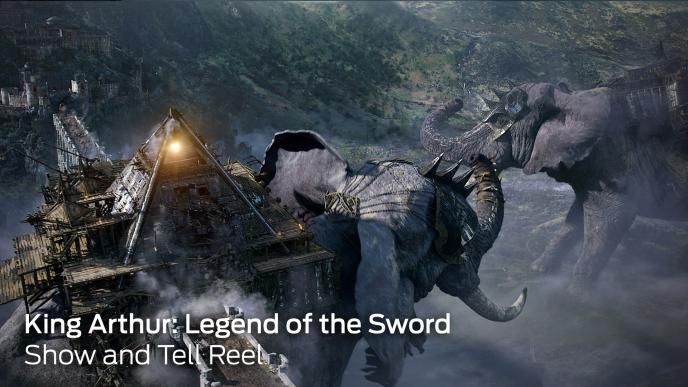
Crafting Camelot
The film opens with the impressively sprawling Camelot, an almost entirely CG environment. Helicopter plates were shot of Moelwynion, near Mount Snowdon, and coupled with Lidar photo scans of the set. ‘It’s a fantastic environment,’ says Jonathan Fawkner, VFX Supervisor. ‘It’s hugely detailed, with a giant valley which the team meticulously recreated.’ As the opening sequence evolved the environment became bigger and its destruction had to be choreographed to the action. ‘The destruction was a fantastic challenge,’ adds Christian Kaestner, VFX Supervisor. ‘I think it brought out the children in a lot of the team - everyone loves to blow up things, and on this scale it was as much fun as the challenge was big.’
The team approached the castle build in parts, modelling individual sections that could be textured and modified individually, fixing them together later at render stage.
The scale was the biggest challenge here. Everything had to be huge.
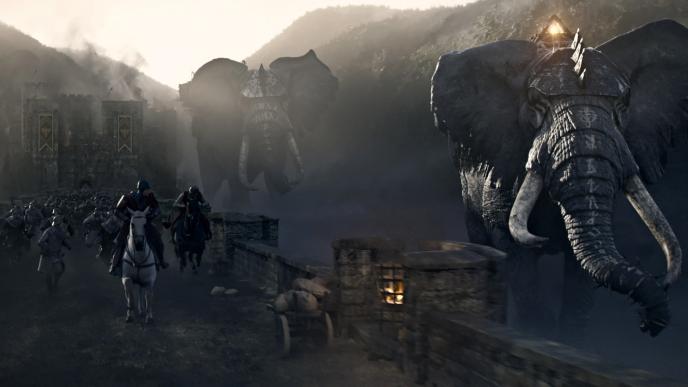
Epic Elephants
The epic opening scene features 300-foot tall elephants attempting to destroy Camelot. 'We inverted an approach that we take when shooting miniatures,' said Kaestner. 'We took regular walk cycles, matched them to real elephants, and slowed everything down and refined it from there.'
Ritchie was keen for the elephants to be magical, but also very much grounded in reality. The team took reference from several species of African elephants, though says Kaestner, ‘We really wanted them to have character, and Guy requested we add war paint.’ The elephants also held armour and wooden structures on their backs, housing ropes and flags which needed simulation. ‘It’s very easy to blow the scale of something that big,’ adds Stuart Penn, CG Supervisor. The detail was important; look dev artists developed the patterning of the skin, the texture variation and the ingrained dirt within the folds of skin.
On top of the elephants there are large wooden pyramid-shaped structures that had to be completely destroyed by the end of the sequence. 'For this we had to rely on the latest R&D development on instancing geometry,' explains Ben Mangana, CG Supervisor. 'This was so we could strike the right balance between the huge scale and the efficiency on our destruction simulations versus the high level of detail expected in certain close-up shots.'
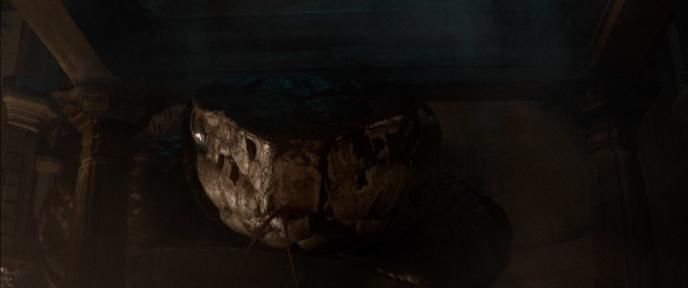
Snakes and Sorcery
A giant serpent is conjured inside the castle, which required some new tool development. ‘We needed to get the scale right because we see the giant serpent really close-up,’ says Penn. ‘We laid out individual scales along the body and then added something we called “snake oil”, which allowed the scales to slide over the skin and each other. As it deforms they’re pinned to part of the skin, but they’ll slide over the other scales.’
The snake was rigged to deform as it came into contact with the ground. ‘We were looking at different types of snakes and how they move,’ adds Penn. ‘Our snake is huge, but moves so, so fast. The problem was, it had to fit in the Throne Room. It actually wrapped around it twice, so we had to cheat a little to keep it moving and not allow it get in its own way.’
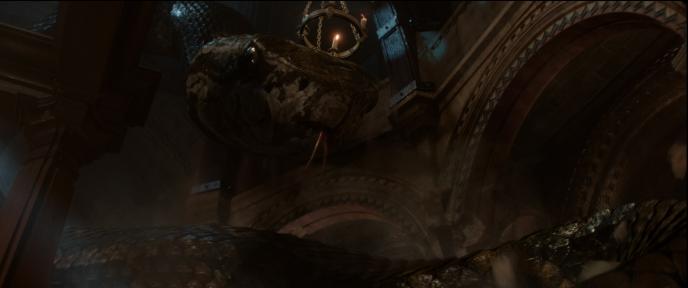
It was the final act of the movie, so it had to be epic!
Battling the Nemesis
The Nemesis is a completely CG, hand-animated character who battles Arthur (Charlie Humman) in the jaw-dropping finale. 'We built the Nemesis from the inside-out,’ explains Penn. ‘It required high fidelity muscle systems and allowed us to take our muscle pipeline to new levels. This combined with the fiery cape and vari-speeds made it particularly complicated.’
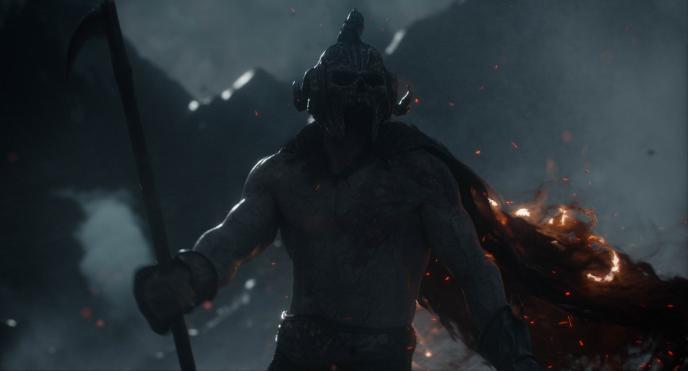
The action is set on a volcanic island, surrounded by water, lava, waves and steam and an enormous FX environment. ‘The environment itself changed a few times; evolving with the production. Guy wanted to set it in a visually unique world,’ notes Penn. Photo scans of real rocks from beaches on the Welsh coast were used to sculpt the Island. Complex simulations were then art-directed on a per shot basis.
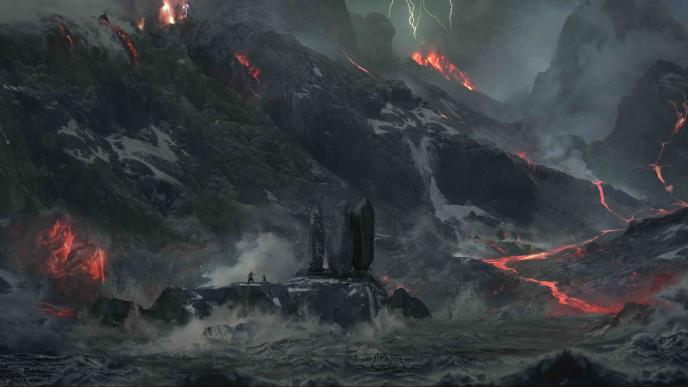
It was a lot of fun - it was fantastical and magical but in a grounded, gritty way, and we had a lot of creative freedom.
It was a lot of fun - it was fantastical and magical but in a grounded, gritty way, and we had a lot of creative freedom.
Framestore’s varied range of work also included the creation of a photo-real eagle, which carries a CG snake to Camelot; the “baby” snake found in the Throne Room; the interiors of the Tower, and its destruction. Working closely with Nick Davis, the team were able to establish a unique look for the show whilst staying firmly balanced between reality and the magical.
